From the 1950s, I think. Very cool. Paris swings, but old lady Seine . . . she just keeps rolling along.
I can't remember where I found this or who took it. If anybody out there knows, I'll be happy to give credit where credit is due.

From the 1950s, I think. Very cool. Paris swings, but old lady Seine . . . she just keeps rolling along.
I can't remember where I found this or who took it. If anybody out there knows, I'll be happy to give credit where credit is due.
In 1972, when I was 22 years-old, I crossed the Atlantic for the first time, to London, where my sister was living at the time. I went with the rest of my family, including my grandmother, and my friend Cotty Chubb. We stayed in a rented house near Hampstead Heath.
We arrived at night and first thing the next morning Cotty and I headed straight to Bunhill Fields by the Underground. We would have taken the Edgeware-Morden line from Hampstead to the Old Street station, which is just a short walk from Bunhill Fields. At one end of the journey or the other we found a florist and bought three yellow roses to lay on the grave of William Blake, who is buried in Bunhill Fields with other dissenters from the Church Of England orthodoxy.
In 1965 many of the grave markers in Bunhill Fields (whose name is derived from Bonehill Fields) had been removed to create a small park with a lawn — the “fields” of old have become a very small bit of enclosed space. Blake's grave had been unmarked until 1927, when a small stone was erected over it. In 1965 the stone, which lay within the area of the planned park, was moved to a location near the intersection of two paved pathways, which is where we found it and where it remains today, about 20 yards from Blake's actual resting place, in a once-again unmarked spot on the present lawn. (Recently the actual gravesite was re-discovered and there are plans afoot to put a new marker there.)
We laid the roses on the pathway in front of the marker we found. “One for me,” I said, “one for thee, and one for you know who.” I wasn't quite sure what this meant, but it allows me to say today that I laid a rose on Blake's grave for you, whoever you are.
Cotty and I visited several other Blake sites in London, and took a train down to Felpham, on the south coast of England, to see the cottage where Blake lived for a few years and where he wrote Jerusalem.
From the train station in Felpham we took an enclosed double-decker bus to the cottage. It was just before Christmas. In the front seat of the second deck of the bus was a little girl of about 5 years of age, sitting with her mother. The little girl was singing, in a sweet, piping voice, “Hark, the Herald Angels Sing!”
I'm quite sure that Mr. Blake arranged this — perhaps to thank us for the flowers.
Demons drove him hence. He was a beautiful young man who somehow got the notion that he was meant to look like Lena Horne. He paid doctors to hack away at his face until it bore a grotesque resemblance to his dream. It was reported that in recent years the surgery had caused his nose to collapse, requiring the use of a prosthetic device to hide the horror of it. Poe alone could have dealt with the American Gothic tragedy of Michael Jackson's life — the life of a man who made and wore his own death mask.
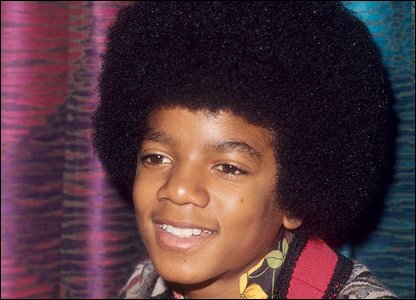
The root of it was probably all too simple — the usual dad thing. It's been related that Michael's dad, when Michael was a kid about to go on stage, used to tell him there were men with guns in the audience who would shoot him if he didn't dance fast enough. He's been dancing fast ever since. From childhood he was surround by crowds of people who couldn't say no to him — all of which was nothing as against a father who couldn't say yes.
He really was the King Of Pop, though — even if that was a title he first bestowed on himself. Great pop music can unite generations and classes and races in its infectious magic. As the tributes pile up on the cable news shows, Michael's music plays them in and out. Almost all of it makes you want to dance — and makes you sad that Michael was dancing to a different beat in his head when he made it . . . the beat of a death march that has finally reached the burying ground.
All that wonderful music we heard in its place was perhaps another illustration of The Nazareth Principle.
In my last post I goofed on all the conflicting stories surrounding the mystery of Governor Mark Sanford's whereabouts. Little did I know that the truth behind the incident would prove more surreal than I could possibly have imagined. The guy was “hiking the Appalachian Trail” down in Argentina, of all places, and having himself a good cry in the bargain.
I don't mean to be too flip about it, though. If you watched the poor fellow's press conference you basically saw someone having a nervous breakdown on national television. Sanford strikes me as a different sort of man from John Ensign, whose adultery and contrition over same seemed purely cynical, and which I parodied in an earlier post. Ensign doubled his mistress's salary while they were sleeping together, then fired her when the affair was over. His “backstreet romance” was more like transactional sex — like prostitution.
I see Ensign as one of those politicians who enjoy using the law to force their morality on others but feel no corresponding obligation to live up to that morality themselves. This is less about hypocrisy or ordinary human frailty than about pathological arrogance. Eliot Spitzer, on the other side of the political spectrum, seemed to suffer from the same syndrome — relentlessly prosecuting prostitution in courts of law while employing the “services” of a prostitute in private.
John Edwards, by contrast, didn't pontificate about other people's morality — his adultery seemed to proceed from narcissism of an extremely advanced variety.
Sanford's case feels more complex, and interesting. He's clearly still in love with his Argentinian bombshell, if by love we mean the pussy-fever associated with a new and transgressive sexual relationship. Some failing in the right-wing Christian culture he inhabits seems to have left him unprepared to deal with the power of that fever — you get a sense he was blindsided by it, and is still reeling from the blow.
Perhaps there is something about the rhetoric of his culture that minimizes the exaltation of sexual love, relating it too exclusively to law and duty, downplaying its delirious joy, leaving the members of that culture defenseless when the real thing emerges or re-emerges in their lives.

When it comes to adultery, I'm agin' it — I don't see it as a “pecadillo” but as a profound, existentially crippling moral failing . . . yet at the same time less about the sex involved than about a violation of trust that can almost literally rip the heart out of a partner. No amount of personal pleasure or fulfillment can justify it, but you need to have a healthy appreciation of just how much personal pleasure and fulfillment it can deliver to know what you're up against when it presents itself.
I don't think Mark Sanford had a clue. In his e-mails to his mistress he sounds like a lovesick and somewhat bewildered teenager. How did he get to the age of 49 in that condition of emotional immaturity?
I'd like to apologize to the readers of this blog for my unexplained absence between the 16th and 18th of this month, when nothing was posted here. The truth is that I went off hiking by myself in the Red Rock National Conservation Area, just outside Las Vegas — because I needed some space to clear my head.
While in Mexico, I was able to put things back into focus, reorder my priorities and set ambitious new goals for the future.

There's just something about the pure air of the Canadian Rockies that sharpens a fellow's perspective. Up in that high country, far above the worries of the world, I was lucky enough to run into my old friend Mark Sanford, Governor of South Carolina, who was having a little “time out” of his own. We fished for trout in a sparkling brook, cooked up our catch over a crackling fire under the stars and commiserated about our crushing responsibilities.
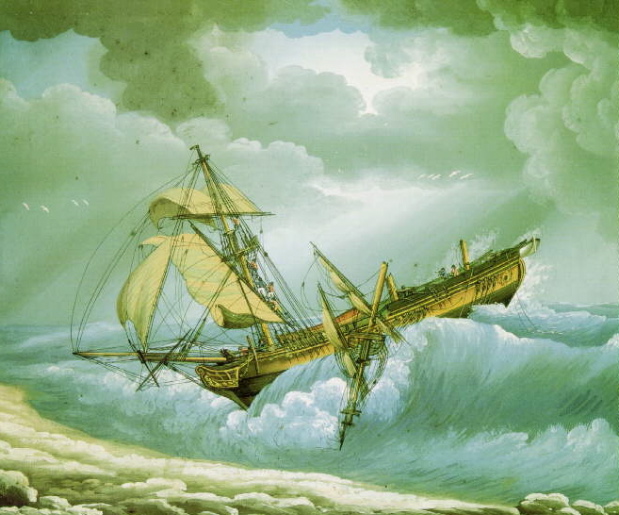
It helped, I can tell you. As we brought our little boat about in a brisk gale in the Bay Of Biscay and headed towards the shelter of the harbor at Santander, we felt ready to resume our burdens.
I know people were worried about me while I was gone — the Gobi Desert isn't a place you want to wander in for too long on your own — but I'm back, I'm fine, and I feel renewed. When Mark gets home, I'm sure he'll have a very similar tale to tell.
What's happening in Iran right now makes me ashamed that I didn't take to the streets in 2000, along with hundreds of thousands of other Americans, when the Supreme Court appointed George Bush President, in lieu of counting all the votes actually cast in the election — the most disgraceful act committed by that august body since the Dred Scott decision of 1857.
All Americans should have been willing to die rather than accept the selection of its leader by a small group of “wise elders” rather than the election of that leader by the votes of the people. We lost an incalculable measure of our honor as citizens of a great republic when we failed to respond to the Supreme Court's grotesque violation of the Constitution.
The people of Iran, especially its courageous young women, put us all to shame, and make us realize that we richly deserved our Ahmadinejad — “the mullahs's choice”.
My sister Neda — and yours. Murdered by the Iranian state on the streets of Tehran this past Saturday.
Folks who use Twitter are encouraged to set their Twitter time zone to Tehran time — in the Settings menu — to help disguise Tweets originating in Iran from the Iranian government.
The coverage of the events in Iran by the cable news networks has been disgraceful. They basically just report online news several hours after it appears on the Internet, jazzed up with meaningless bloviation.
The deluge of Tweets on the subject is confusing, however. Here's a site which filters them intelligently (something the official news organizations seem incapable of doing):
Super-filtered #IranElection info for the easily overwhelmed (like CNN).
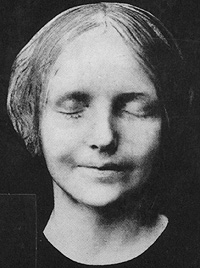
Do you know about her?
The story goes like this . . .
In the 1880s the corpse of a young girl was found floating in the
Seine. The body showed no marks of violence, so it was assumed the
girl committed suicide. She was never identified.
Apparently
a doctor working in the Paris morgue was so taken by her beauty that he
made a death mask of her face. Somehow copies of the death mask
started circulating — Romantic artists in particular fell in love with
it and hung it on the walls of their studios. When people couldn't get
copies of the cast they settled for photographs of it, and some artists
even made new sculptures based on the photographs. It became a cult
object. L'Inconnue de la Seine — the Unknown Girl of the Seine, as she
came to be called — was mentioned in a number of works of 20th Century
literature.
However . . .
. . . modern experts say
that the original cast could not possibly be a death mask, especially
one taken from a corpse which had spent any time in water, because it's
too detailed and the skin is too firm and full over the skull. They
say it was made from a living model, probably around sixteen years of
age.
The true model, like the original corpse, has never been identified.
André
Bazin said that a film image has the same relationship to the reality
it records that a death mask has to the face of the corpse it's taken
from — a kind of shared “identity” based on a strict point to point
correspondence. Glamorizing a dead girl by worshiping a cast of her
face may seem like a Victorian eccentricity — but in our time we
worship the images of long-dead movie stars in just the same way. The
photographic “casts” of their faces and forms, in motion no less, still
have glamor . . . and it's partly the glamor of loss, of death.
The “death mask” of L'Inconnue de la Seine had a certain false piquance
supplied by the fact that it was, in fact, a life mask. (“So alive — even in death!”) It's a
different kind of object in our time, because the living girl whose
face it reproduced has long since died. But she was a star in her time
— and remains one, like Judy Garland, Marilyn Monroe . . . and, in her own more sublime and serious way, Neda.
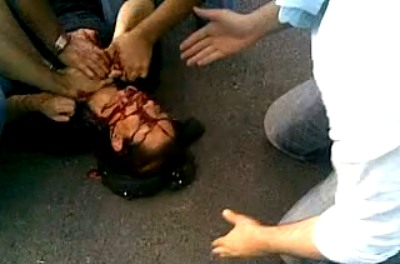
The unarmed woman in the picture above was shot dead on the streets of Tehran today. She was apparently standing off to the side with her father watching the protests when she was shot through the chest by a member of the official “militia” on a nearby rooftop. I wonder how this brave and devout fellow is sleeping tonight. I wonder how the sick, wicked old men who unleashed this horror are sleeping tonight.
It has been reported that the name of the murdered women is Neda — which is Farsi for “voice”. It has not been silenced. Her name has flown around the world on the Internet with the speed of angels in flight. Pictures of her bloody face have been taken up by the protesters in Iran as a symbol of their rising.
I'm sorry to post it here — I know it's hard to look at — but it helps me realize that the hands reaching down to save her must be our hands, too. We are all Iranians now. An anonymous Tweet from someone in Iran:
I had one vote. I gave it to Mousavi. I have one life. I will give it for freedom.
In terrible moments like this we realize how important and powerful one life can be.
Mousavi says he is ready for martyrdom. Will the sick, wicked old men demand that of him? If so, they will join the dust heap of history far quicker and far sooner than anyone could have imagined ten days ago.

A protester on the streets of Iran this week holding up a hand puppet with a sign that reads:
Real face of a liar dictator.
If you're the praying sort, pray for those on the streets of Iran today. If not, keep your fingers crossed.
John Ensign is one of my Senators here in the great state of Nevada. For years he's been speaking out forcefully against the legal recognition of same-sex unions, on the grounds that it represents a threat to the sanctity of traditional marriage.
Some might say that he has pontificated self-righteously on the subject, but you have to understand that John saw legal same-sex unions as a clear and present danger to the very foundations of human civilization.
Recent events have tended to confirm his view beyond a reasonable doubt.
When John heard that Vermont, Maine and Iowa (of all places!) had recognized same-sex unions he immediately began fucking someone who was not his his wife. Who can blame him? If two fags in Iowa could get the same civil benefits of marriage that used to be reserved for heterosexual couples exclusively, what possible motivation remained for John to honor the sanctity of his own marriage vows?
Vermont, Maine, Iowa — please, in the name of all that's holy! Repeal your laws recognizing same-sex unions now and help save John Ensign's marriage before it's too late!

John is not a bad person. He's stepped up to the plate, taken responsibility and expressed contrition for his actions. All it took for him to do this was a threat of blackmail. If rumors of other “indiscretions” prove to be true, I'm sure he'll express the same contrition for each of them — all in good time . . . just as soon as the gentle prod of blackmail is applied.
Meanwhile . . . for shame, Iowa — for shame!
Awkward dating moments do seem to occur more often when extraterrestrial aliens woo earthlings. A little more understanding on both sides is what's needed.
The illustration above for a romance story in a women's magazine from 1959 (I'm not sure which one) was done by Coby Whitmore, who specialized in such stories and in magazine ads for women's products.
Whitmore was part of a new wave in magazine illustration in the late Forties that broke away from the Norman Rockwell school — but not too far. The artists of this generation still relied on an almost photorealistic draftsmanship but began to get freer, more painterly, with the treatment of the surface of the image and moved towards bolder graphic effects in the overall design. Backgrounds often became highly abstracted — a contrast to the meticulously rendered environments of Rockwell's most characteristic work. The image below is an illustration for a romance story in a 1957 issue of Good Housekeeping:
The images of the new-wave artists still had a strong narrative element but it was more intimate, trying to capture fleeting moments and moods, focusing on the characters depicted with a view to glamorizing them.
This approach would come to dominate pulp-fiction paperback covers in the late Fifties and Sixties and informs the style of artists like Robert McGinnis. It's also related to the photorealistic but graphically striking soap-opera comic strips of the Fifties like Mary Perkins On Stage.
[Jack Kerouac, photograph with annotations by Allen Ginsberg]
I pulled into Nazareth, I was feelin' 'bout half past dead.
— Robbie Robertson
Paul Zahl and his wife Mary recently moved from Maryland to Florida.
On the road with a friend, hauling his belongings south, Paul had a
rendezvous with the Ghost of Christmas Past:
Our son Simeon says that faith is summed up in something he calls the
“Nazareth principle”. This refers to the question in the New Testament
where someone scoffs at Jesus the carpenter by asking, “Can anything
good come out of Nazareth?”
The idea was that Nazareth was a city, in the region of Galilee, which
was known for its “mixed-blood” and therefore suspect practice of
Judaism. Because the carpenter/prophet came from Nazareth, didn't that
disqualify him from being the real thing?
Yet as Simeon says, in life — time after time — the best things come
from the unlikeliest places. And this “Nazareth principle” extends to
the fact that out of trouble and wounds, disappointments and closed
doors, come often the actual breakthroughs of personal life.
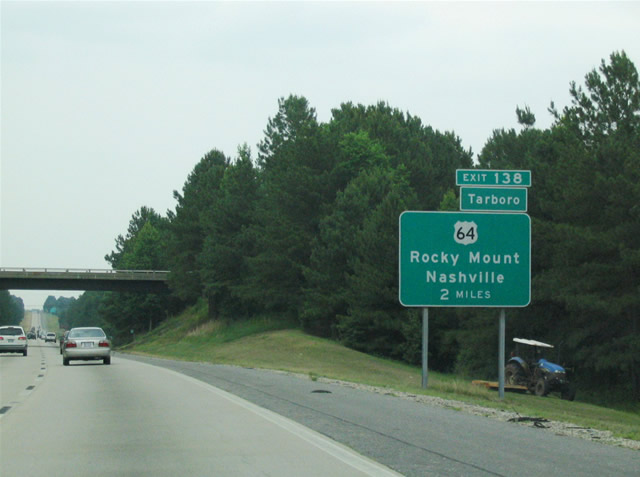
I just saw this “Nazareth principle” up close and personal on a visit
to the town of Rocky Mount, North Carolina. A friend of mine and I
were driving a rental truck from Washington, D.C. to Orlando, Florida
and I decided to try to find and see a place I dearly love, in my
heart. This is the house where Jack Kerouac used to come at Christmas
during the mid-1950s in the midst of his wild ride of a life. Whether
Kerouac was in Manhattan, San Francisco, or Mexico City, he always
hitchhiked his way back home for Christmas. And home for Kerouac was
wherever his mother, “Memere”, was.
Because Kerouac's sister, Caroline, and her husband Paul, and their
little boy Paul were living in Rocky Mount for a period of years, home
for Christmas meant there.
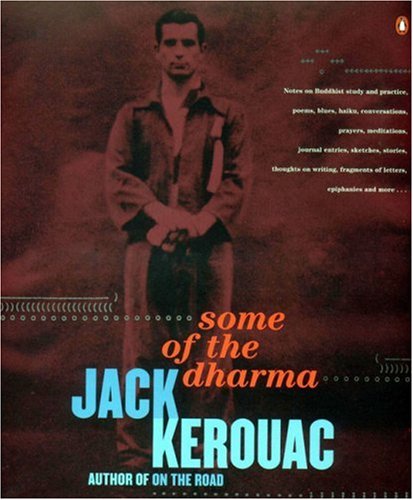
This was Kerouac's most intense Buddhist phase, which also meant a 24/7
dialogue with Christianity, his inherited religion. The weeks in Rocky
Mount are described in great detail in his notes on religion, which
were published posthumously as Some of the Dharma. Kerouac would
meditate almost every night in Twin Pine Grove behind his sister's
house, and write down every single word and vision that occurred to him.
He also composed his book Visions of Gerard at the kitchen table in Rocky Mount.
So I wanted to see where these great words came to him, to “heav'n's
recording angel” — Allen Ginsberg's phrase for his friend Jack Kerouac. [Below, a very young Allen Ginsberg:]
But I had no address.
What I did have was a photograph of the house, taken by a local
journalist and published on her blog. I also knew that the house was
in a section of Rocky Mount about three miles outside of town which
used to be called Big Easonburg Woods but is now called West Mount. This
is all that my friend Michael McDowell and I had to go on — the name
for the neighborhood and a photograph of a tiny frame house painted
blue-gray with purple shutters.
So we pulled our Budget truck off Route 95 and made our way to a long
road called West Mount Drive, then just started driving and looking. There
were a lot of big trucks and no one had any patience with our little
moving van with its caution lights flashing. We drove about a mile and
saw several houses that might have been the one. And then . . .

[Photo © Marion Blackburn]
I saw it! The handicapped ramp and the colors exactly as in the photograph.
At the corner of Cameron Street and West Mount Drive sits the house in
which God spoke to Jack Kerouac. Or at least that is how I see it.
The jungled grove of pine trees is right behind the house, there is a
gas station just yards away (in Kerouac's day this was a “cracker”
country store as he described it), and a few small brick bungalows sit
on a dead-end road behind the home. They each have a satellite dish
and each one looks as if it were built in the mid-1960s.
I didn't dare to knock on the door — the house is obviously lived in,
with children's toys scattered in the small backyard — but asked about
it at the gas station. The man at the desk had never heard of
Kerouac. Yet this was definitely the house. I had read about it on
another Kerouac blog, in which the fan had found himself unwelcome when
he looked inside. But the pictures all matched.
[Photo © Daniel Barth]
We parked our truck, I walked around, meditated for five minutes — it
was about 100 degrees — and envisaged our man walking around with his
poncho and his dog between two a.m. and five a.m. on those cold
December and January nights in 1956. That the genius, like the Son of
Man, had “no place to lay his head” except for this tiny little spot in
the “back of beyond”, is simply an astonishing fact of human existence
and history.
I don't know if you've ever had the chance to read Visions of Gerard,
but it is sublime. It tells the story of the death of Jack's older
brother at age nine, in Lowell, Massachusetts — a kind of saint, this child. And
the author gives his tale and his interpretation of the tale absolutely
everything he has. It is a masterpiece that I recommend to everyone,
especially if religion interests you. On one page Jack is a
Samsara-diagnosing Buddhist; on another, a Crown of Thorns Christian, of
piercing conscience and intention. And he wrote the inspired little
book at the kitchen table of this house on West Mount Drive at the
corner of Cameron Street.
Later that night, Michael and I stopped at the house of friends in the
Low Country of South Carolina. It was and is one of that region's most
beautiful and soulful plantations, an ante-bellum house of exquisite
taste and proportions. We had a wonderful time, with lovely,
thoughtful people.
But I myself was still in Rocky Mount! How could it be that “God”/A
Higher Power/Karma/The Father of All could have set up a world in which
one of His finest and most gifted spirits would have no settled home
save this tiny refuge, covered now,
and even then, with the dust of passing trailers and trucks and “Dukes
of Hazard” Corvettes. Yet that's the way it really is. And there is
something to this affinity with a Man of Sorrows that struck me on
Monday afternoon, and definitely struck Kerouac even back then as he
wrote his notes in the Carolina dawn, which mirrors the facts of
suffering life.
Nowhere could the Nazareth principle be more concrete than in Rocky
Mount, North Carolina, off Wesleyan Boulevard on that long industrial road which
cuts through Big Easonburg Woods.
Jack Kerouac rests far from Rocky Mount, in Lowell, Massachusetts, where his grave (above) is also a place of pilgrimage, but you just know that his restless spirit is still on the road — that we're likely to encounter it anywhere, from Bodh Gaya to Nazareth to West Mount Drive.
[Note: Fans of Paul Zahl's contributions to this site can now find all his articles (and one about him) at The Zahl File, in the category list to the left.]
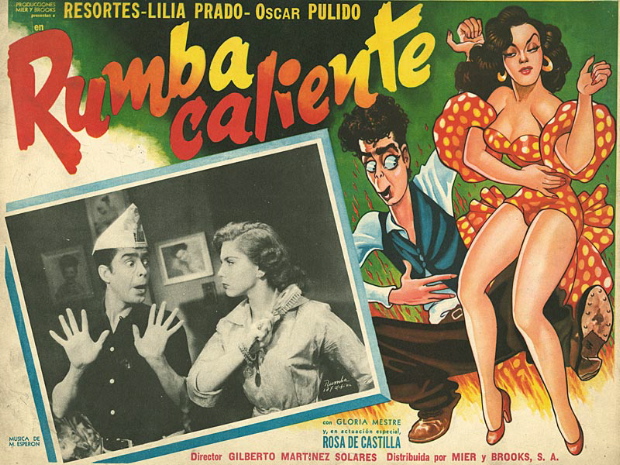
Mexican lobby cards have a wonderful sort of honesty. The colorful illustration promises magic, the photographic insert confesses to the kind of banality one will likely find in the film itself.
It hardly matters, since the rumba in question will undoubtedly be caliente.